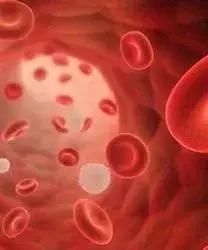Publication
Article
Supplements and Featured Publications
Tisagenlecleucel Displays Promising Efficacy Results Across Subgroups in R/R FL
Author(s):
Tisagenlecleucel produced a high overall response rate and complete response rate in adult patients with relapsed/refractory follicular lymphoma who had received 2 or more prior lines of therapy, according to results from an extended follow-up analysis of patients with at least 12 months of follow-up of the phase 2 ELARA trial.

Tisagenlecleucel (Kymriah) produced a high overall response rate (ORR) and complete response (CR) rate in adult patients with relapsed/refractory follicular lymphoma who had received 2 or more prior lines of therapy, according to results from an extended follow-up analysis of patients with at least 12 months of follow-up of the phase 2 ELARA trial (NCT03568461) presented at the 2021 American Society of Hematology Annual Meeting & Exposition. The chimeric antigen receptor (CAR) T-cell agent was also associated with durable responses and a promising 12-month progression-free survival (PFS) rate.
Among the 94 efficacy-evaluable patients, the ORR was 86.2% (95% CI, 77.5%-92.4%) and the CR rate was 69.1% (95% CI, 58.8%-78.3%). The 12-month PFS rate was 67.0% (95% CI, 56.0%-75.8%) and the 9-month duration of response (DOR) rate was 76.0% (95% CI, 64.6%84.2%). Notably, among patients who achieved a CR, the 12-month PFS rate was 85.5% (95% CI, 74%-92%) and the estimated 9-month DOR rate was 86.5% (95% CI, 75%-93%). The median follow-up was 17 months (range, 10-26).
At a longer follow-up of 21 months, the median PFS was 29.5 months (95% CI, 17.9 to not evaluable).
“Patients with high-risk disease [factors] such as progression of disease within 2 years [POD24], high tumor burden, and high Ann Arbor stage have a poor prognosis with current treatment options,” said Catherine Thieblemont, MD, PhD, head of the HematoOncology Department at Saint Louis Hospital in Paris, France. “Novel therapies such as the autologous anti-CD19 CAR T-cell therapy tisagenlecleucel are being investigated to improve outcomes.”
In patients who received at least 3 prior lines of therapy (n = 70) the CR, ORR, and 12-month PFS rates were 72.9%, 88.6%, and 69.4%, respectively. Among patients previously treated with at least 4 lines of therapy (n = 51) the CR, ORR, and 12-month PFS rates were 72.6%, 88.2%, and 68.5%, respectively. Patients who received at least 5 prior lines of therapy (n = 27) had a CR rate of 59.3%, an ORR of 85.2%, and a 12-month PFS rate of 59.6%.
Patients with high-risk total metabolic tumor volume (TMTV; n = 20), defined as greater than 510 mL, achieved a CRR of 40.0% vs 76.4% in the low-risk group (n = 72). Patients with highrisk TMTV often had bulky disease (90.0%), a FLIPI score of at least 3 at study entry (85.0%), and a C-reactive protein level at infusion greater than the upper limit of normal (70.0%). These figures were 58.3%, 54.2%, and 45.8%, respectively, in patients with low-risk TMTV. Patients with high-risk TMTV had a 12-month PFS rate of 54.5% vs 68.5% in the low-risk group (HR, 2.5; 95% CI, 1.3-5.6).
Patients with high-risk POD24 (n = 61) achieved a CR rate of 59.0% compared with 87.9% in the low-risk POD24 subgroup (n = 33). The high-risk POD24 subgroup had a 12-month PFS rate of 60.8% vs 77.9% in the low-risk cohort (HR, 2.3; 95% CI, 1.0-5.3).
Patients with grade 1, 2, or 3A relapsed/ refractory follicular lymphoma were eligible for the trial. Patients also needed to have no evidence of histological transformation, and no patients with grade 3B follicular lymphoma were included. Prior anti-CD19 therapy or allogenic hematopoietic stem cell transplantation were not permitted.
Investigators administered tisagenlecleucel administered via a single intravenous (IV) infusion at a range of 0.6 to 6 x 106 of CAR-positive viable T cells. Lymphodepleting chemotherapy options consisted of fludarabine (25 mg/m2 IV daily for 3 days) plus cyclophosphamide (250 mg/m2 IV daily for 2 days) or bendamustine (90 mg/m2 daily for 2 days). Bridging therapy was allowed and followed by disease re-evaluation prior to tisagenlecleucel infusion.
The primary end point of the trial was CR as assessed by an independent review committee. Secondary end points included ORR, DOR, PFS, overall survival, safety, and cellular kinetics.
In terms of safety, 96.9% of the 97-patient safety population experienced an adverse effect (AE) of any grade. Grade 3 or higher AEs were reported in 71.1% of patients. Any-grade cytokine release syndrome (CRS) was reported in 48.5% of patients; no grade 3 or higher CRS was observed. Other common AEs of any grade included nervous system disorders (37.1%), neutropenia (33.0%), anemia (24.7%), infections (18.6%), and thrombocytopenia (16.5%).
Within 8 weeks of infusion, 27.8% of patients had maximum grade 1 CRS and 20.6% had maximum grade 2; no patients experienced grade 3 or 4 CRS. The median time to onset of CRS was 4.0 days (range, 1-14) and the median duration of CRS was also 4.0 days (range, 1-24).
Among the 47 patients who experienced CRS within 8 weeks of infusion, 14.9% had concurrent infections and 8.5% were admitted to the intensive care unit (ICU). The median duration of an ICU stay was 4 days.
“In multivariate analyses, POD24 and TMTV appeared to impact PFS vs the low-risk group, but tisagenlecleucel is still superior to the current SOC—[that is], non–CAR T-cell therapy—for patients with relapsed/refractory follicular lymphoma,” said Thieblemont. “Further exploration of the prognostic value of high TMTV in the CAR T-cell therapy setting is warranted.”
Reference
Thieblemont C, Dickinson M, Martinez-Lopez K, et al. Efficacy of Tisagenlecleucel in Adult Patients (Pts) with High-Risk Relapsed/Refractory Follicular Lymphoma (r/r FL): Subgroup Analysis of the Phase II Elara Study. Paper presented at: 2021 ASH Annual Meeting and Exposition; December 11-14, 2021; Atlanta, GA. Abstract 0131.










